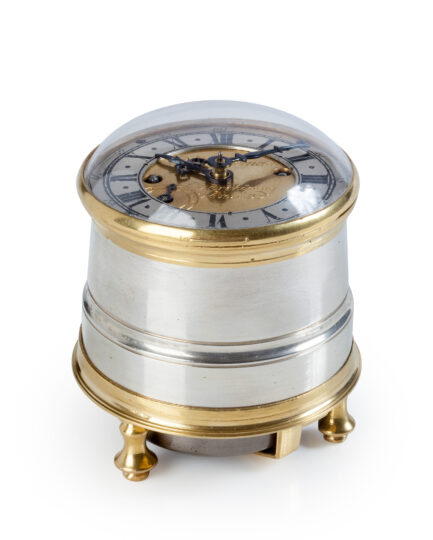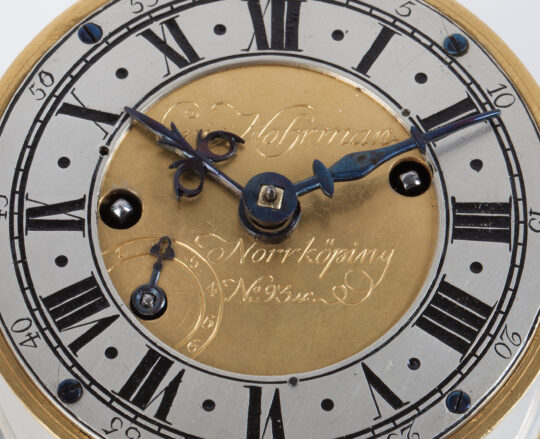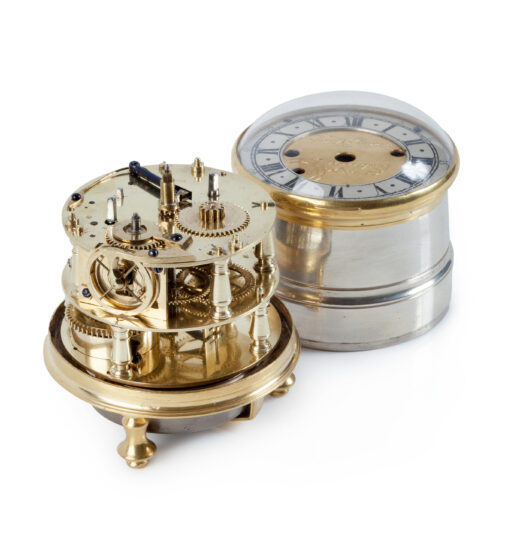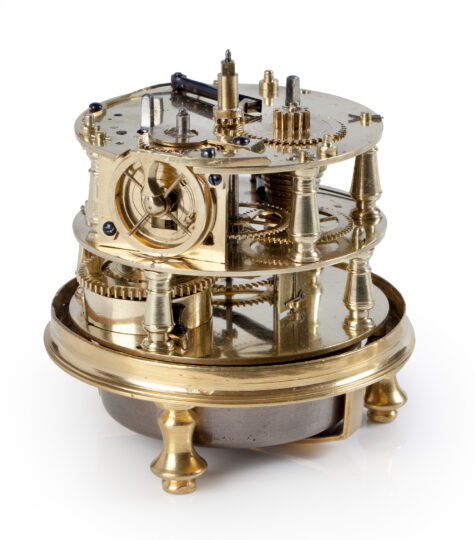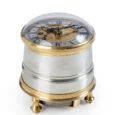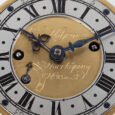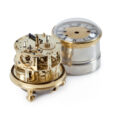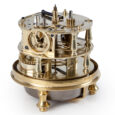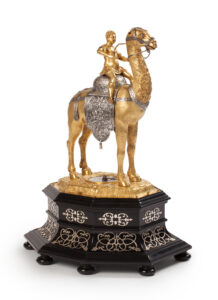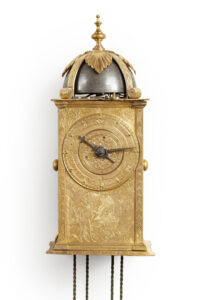CIRCULAR HORIZONTAL TABLE CLOCK (TISCHUHR) Eric Nohrman Norrköping No. 93 Ca. 1770 Sweden
M&R209b
CIRCULAR HORIZONTAL TABLE CLOCK (TISCHUHR)
Signed and numbered: Eric Nohrman Norrköping No. 93
Circa 1770
Sweden
Movement
The spring-driven brass movement is constructed between horizontal plates and consists of going and striking trains. The going train has a spring barrel, a chain fusee and a vertical hairspring balance with regulation. The count-wheel striking indicates the hours on a bell. The clock is wound from the top.
Dial
The circular gilt brass dial has a silvered chapter ring with Roman hour numerals and half-hour, quarter-hour, Arabic five-minute and minute divisions. The time is indicated by a pair of pierced blued steel hands . The winding holes are positioned near the IX and between the II and the III. The small chapter ring near the VIII is for the regulation of the movement. The maker has signed and numbered the dial above and below the middle: Eric Nohrman Norrköping No. 93.
Case
The cylindrical silvered brass case is entirely smooth, with at the top and bottom gilt brass mouldings. Th dial is protected by a convex glass, set in a gilt brass bezel. The bell is situated in the bottom plate, whilst the whole rests on three shaped gilt brass feet.
Duration: 1 day
Height: 10 cm.
Diameter: 7 cm.
Literature
Pipping Sidenbladh Elfström, Urmakare och Klockor i Sverige & Finland, p. 401.
The maker
Eric Nohrman was active a clockmaker in Stockholm around 1759 and became master in 1763. A few years later he moved to Norrköping where he received a scholarship in 1769. In 1776 he gets a permit to set up a factory in Norrköping for the production of watches and clocks. After Norhman’s death in 1779, the factory was run for several years by the widow Birgitta Törnbom.

